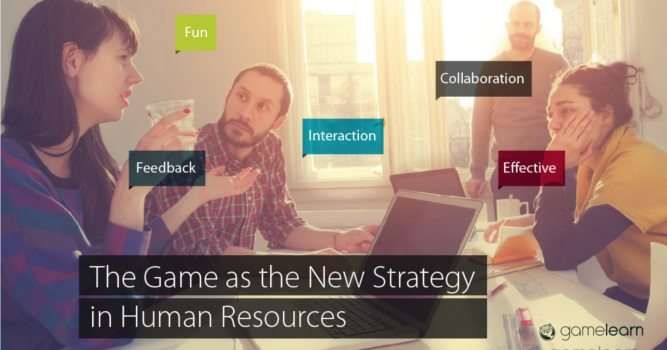More and more people are hearing about gamification and are getting to know what it is. The use of game mechanics in activities or contexts away from the playful environment is a trend that keeps on growing. The game is also the new HR strategy. Actually, it is the future of e-learning.
Among the many advantages of gamification in the complex and ever-changing world of Human Resources, there is the opportunity to recruit the ideal candidate for our company. Many companies have joined the new model: the search for employees through the game.
The company and the candidate use the power of the gaming aspect in order to improve the selection process. Usually, when a person is immersed in a playful context, it is only natural to feel more relaxed and ready to show themselves as they are. The company thus obtains more information and is able to see other aspects of their candidates which might otherwise have never been discovered.
It is not about manipulating the applicant or looking for dirty laundry, but seeing beyond CVs and noticing the potential of the candidate, which sometimes remains hidden.
For the game to be really effective and meet the purpose we are talking about – personnel selection – it must adapt to the needs of the company and the characteristics of the job.
When implementing the gamified process, a positive feeling of innovation, teamwork and collaboration is automatically generated. This leads to a sense of belonging to the organization, even without having passed the selection process.
The Human Resources department is thus reinforced, and is often aware of the fact that the candidates, even though they may have not been finally selected, will become good brand ambassadors.
It may be interested: 8 Advantages of Gamifying your Company
It is not just the HR department which is strengthened by the use of these innovative techniques. In the selection process, employees from the company itself who want to get the position can also participate. Sometimes, opening a vacancy within the company generates nervousness and discomfort among the staff. Using gamification to get to know about the candidates lowers the level of concern among workers who, for some reason, feel threatened by the launch of personnel interviews.
What should the gamified process consist of to make it really effective? The strategy to select the most suitable candidate should be based upon these three aspects:
1. Feedback
Through feedback, the company appreciates the participation of the candidates in the process, as well as the interest shown in joining the team. Normally, a “gamified” selection such as the one we are talking about is based on obtaining a certain score on the basis of which the best candidate will be selected. Therefore, it is important that, at all times, applicants know their results as well as the criteria taken into account to obtain them.
2. Interaction
The interactive aspect is also important. Participation in the gamified process should be recognized not only of the candidate for the vacancy, but of all those involved in the game.
3. Fun
Finally, the fun angle. What differentiates a gamified selection process from another one not using gaming techniques is precisely the fun involved, as well as the increased satisfaction when achieving objectives.
It may be interested: The Game as an Antidote for Lack Of Motivation
HR departments do not only employ gamification for their selection processes. Beyond the advantages of recruiting workers using fun and different methods, personnel managers of companies are becoming aware of the many advantages of the game in other fields.
In the training and development of skills, gamification becomes a must for the development of game-based learning, the present and future of online learning.
It may be interested: The Gamification of E-learning
Learning through playing is not just for kids; it is the new strategy for hundreds of companies around the world. The implementation of training solutions to learn skills such as negotiation, communication, time management or leadership tends to be increasingly done in a fun and effective context.
What do you think of the new HR strategies in companies?





